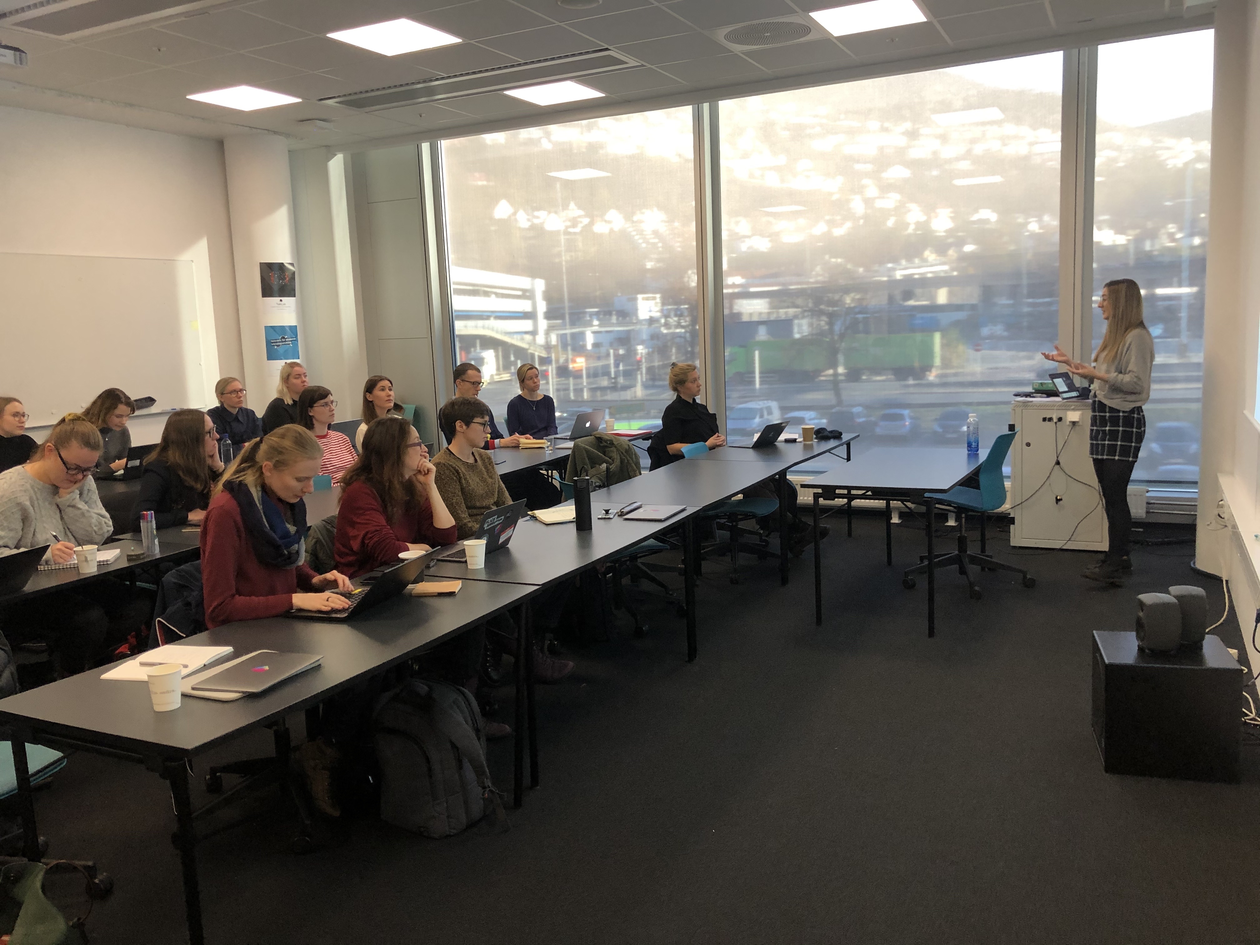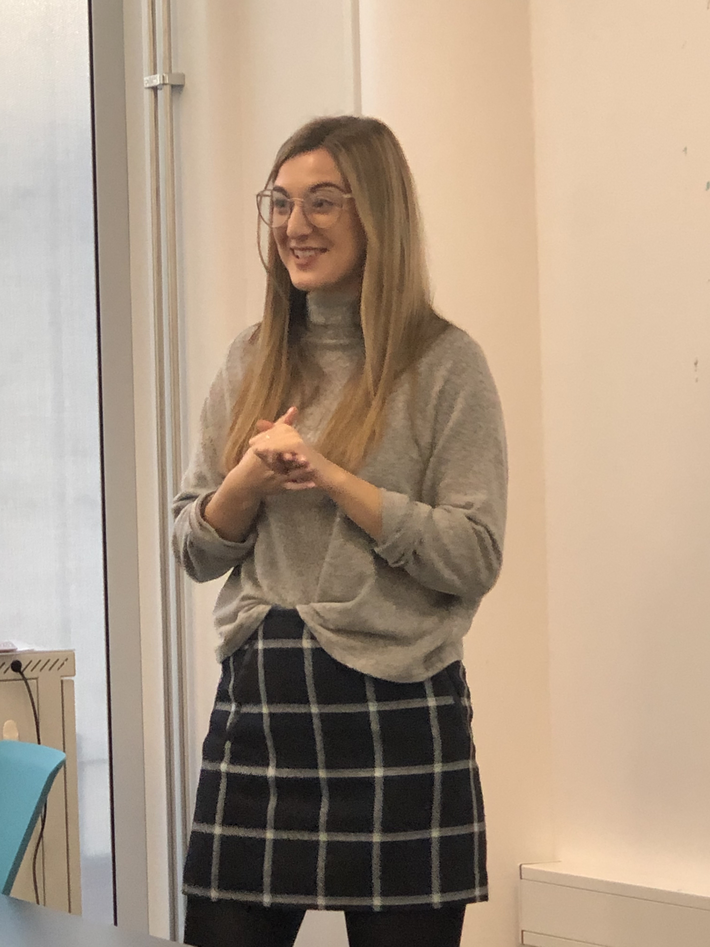Recap: talks and workshop “how to do research on algorithms when you’re not a programmer”
Last week, we ended our semester with a full-day event on approaches to research algorithms without going into the code. Experts Ysabel Gerrard and Taina Bucher each gave a lecture and, in the workshop afterwards, participants discussed their ideas and obstacles on the ways in which they research algorithms.

Main content
CW: eating disorders, self-harm
Dr. Ysabel Gerrard presents the research she did within her internship at Microsoft - and she recommends everyone to apply!) - about hashtag moderation of social media platforms. Gerrard researched the so-called ‘thinspiration’ movement, in which people promote eating disorders. After an article on the phenomenon, Tumblr. changed its policy to take down self-harm content and moderate hashtags, followed by policy changes by Instagram and Pinterest. Researching the algorithms behind this development can be a methodological nightmare as both the moderation and data constantly changes, Gerrard explains. Instead, she took an in-depth, qualitative approach that incorporates all the methodological difficulties as part of her method. The fact that hashtags are moderated and change so quickly in response, means that people must find other ways to promote their content, so Gerrard started making ghost accounts for research to see what she could find. This led her to discover multiple limitations of the platforms’ hashtag moderation, does not include search terms and the automatic clustering of content. It also neglects private accounts and ephemeral communication, which users signal in their user profile by saying relatively vague things that other people looking for this type of content will recognize. In this way, Gerrard’s limitations to researching algorithms became key to better understand the communities. Gerrard ends with 5 tips to research algorithms: 1) Don’t be disheartened by APIcalypse, manual work can yield valuable data, 2) Simulate user experience through your research design, 3) Research users’ experiences with/negotiations of algorithms 4) look beyond single components of platforms 5) Focus on policy implications because there is a disconnect between programmers and policy makers.
In the second talk, dr. Taina Bucher starts out by questioning our event title because it presupposes that programmers are endowed with expertise that puts them in authority and other in the periphery. She argues against the assumption that code is the essence of algorithms. Instead she regards algorithms as multiplicity, situated practices, to be understood as they emerge. To do this, we have to find our own ways to experiment, and Bucher argues that we need to engage with the imagination/imaginary as a methodological approach to algorithms. Speculative algorithm method, for Bucher, does not mean excess or irrationality of economic speculation, but rather a future orientation, problematizing the present and imagining otherwise. Speculative design is one way of doing this: designing not for immediate commercial gains, but as a way to get to people’s ideas of preferable futures. Additionally, algorithms are also speculation in themselves: figuring out what works in different versions, what users want to see, experiments with future to come, and shaping desires. Bucher proposes several ways of intervening in this speculation, including the option to run a Facebook profile collaboratively, to counter the dominant logic of the platform geared toward personal profiles. Bucher ends on the note that looking at code might add knowledge, but it is questionable whether this would actually bring is the knowledge in which we are interested.
After a lunch break, we return for the workshop. In a smaller setting, several researchers give lightning talks on the approaches to researchers and their current issues and obstacles.
Marianne Borchgrevink-Brækhus’s research delves into the development of Norwegian newspaper websites that now have largely algorithmically generated front pages. She will do a newsroom study, interviewing journalists about their experiences with the new algorithm. The participants encourage Borchgrevink-Brækhus in her approach and suggest additional algorithmic and speculative methods such as experimenting with the metrics, doing group sessions in addition to one-to-one interviews and doing a content analysis of front-page articles.
Next up is Ewa Morsund, whose PhD project focuses on algorithms in the making. Her case studies compare the algorithms of public services and corporate media. As getting access to people and documents has proven difficult, the participants brainstorm different ways of doing research, ensuring that success or failure with not pivot on getting access. Taina, for example, proposes to think about the core values linked to public media services, because in line with speculative design, Morsund could experiment with the notion of what a public service algorithm could be.
Jill Walker Rettberg, then, introduces the Machine Vision Database, with which the research team documents the presence of machine vision across media in quantitative and qualitative ways. Building the database itself is an ongoing way of thinking through machine vision as well as a way to disseminate this research. Linda Kronman, also in the Machine Vision team, focuses on the ways in which artists uses artificial neural networks as digital artistic practice. She considers how artists are working, considering the art itself as operative, including machine-to-machine communication. In addition to quantitative analysis, the participants propose using the data as a training dataset, to see what type of records an algorithm would generate based on the manually entered data.
Finally, Brita Ytre-Arne and Hallvard Moe present their findings on how do people experience datafication. Through a qualitative survey with open questions, they found out that people’s attitudes to algorithms are that they are practical, confining, intangible, exploitative, and reductive. Participants discuss Ytre-Arne and Moe’s approach to folk theory of algorithms, and recommend going further into the understanding that people have of algorithms without formal knowledge.
This event was organized by UiB's Research group for media use and audience studies and the Digital Humanities Network. Combining our efforts has proven to be very successful and we look forward to more active collaboration in the future!

